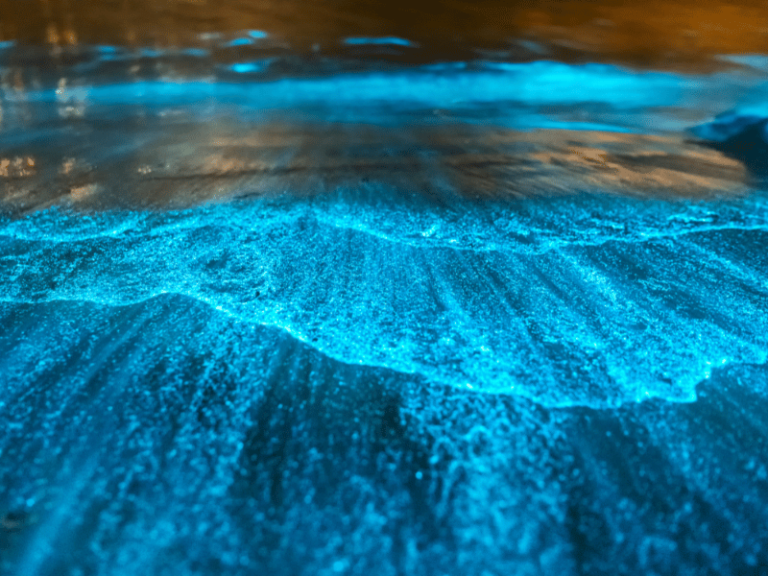For a long time, there have been widespread stories about bioluminescence in the ocean, which ancient people referred to as “sea fireflies.”
The ocean indeed exhibits bioluminescence at times; when the seawater is disturbed, it sparkles and even splashes up like bursts of “sparks”!
Experienced sailors are often mesmerized by this phenomenon of glowing seawater. For instance, on August 11, 1909, in the middle of the night, the ship “Amphibia” en route to Colombo noticed a bright light in the southeast direction. Initially, the crew mistook it for city lights or harbor lights, but as the light grew stronger, they realized it was actually a luminous band emitted by the ocean itself.
The bioluminescence in the ocean is caused by various bioluminescent organisms, with the most significant being planktonic organisms ranging in size from about 0.02 to 5 millimeters, notably firefly squid.
Firefly squid are shaped like fish eggs and emit faint light when as few as 200 are present per liter of seawater. When their numbers increase to 1,000 to 2,000 per liter, the seawater can emit intense fluorescence when disturbed by fish movement, ship motion, or wind waves. However, this fluorescence is not easily visible during daytime or under bright moonlit nights; it becomes particularly noticeable in the dark of night or when the water surface is agitated.
In the ocean, especially in the deep sea, larger organisms like many fish species also exhibit bioluminescence, which can be enhanced by mechanical or chemical stimuli.
Additionally, in certain sea areas where seawater is not influenced by external forces or changes between day and night, a uniform milky-white light can be emitted, caused by extremely tiny luminescent bacteria in the seawater.
Various bioluminescent plankton and bacteria can appear individually in nature or mix together, but they are not abundant in every ocean.
Luminescent bacteria mainly proliferate at estuaries, harbors, and where cold and warm currents converge, where they can obtain rich organic matter. When these luminescent organisms gather in one place, they can cause the ocean surface to glow. Therefore, the magnificent sight of bioluminescence in the ocean requires specific times and locations to be observed.

